Chenfan Zhuang
iFAN: Image-Instance Full Alignment Networks for Adaptive Object Detection
Mar 09, 2020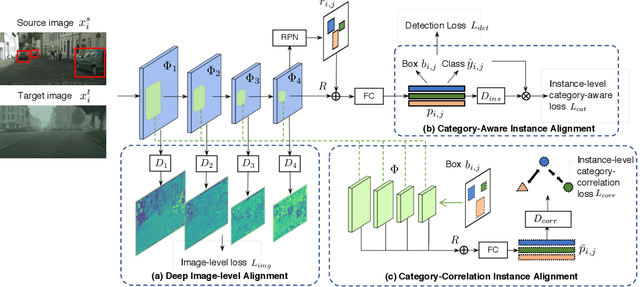
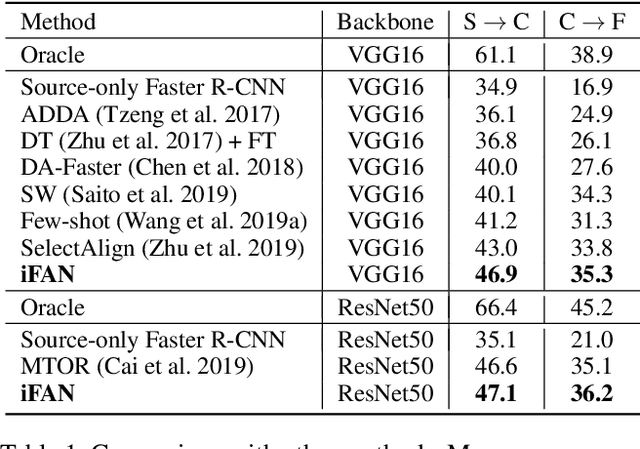

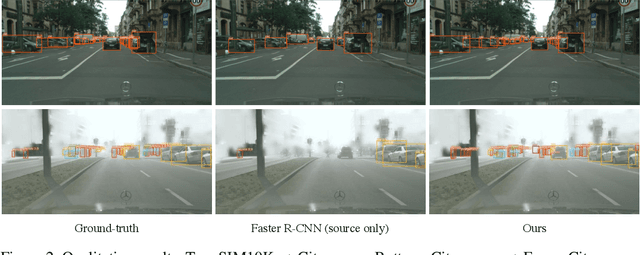
Abstract:Training an object detector on a data-rich domain and applying it to a data-poor one with limited performance drop is highly attractive in industry, because it saves huge annotation cost. Recent research on unsupervised domain adaptive object detection has verified that aligning data distributions between source and target images through adversarial learning is very useful. The key is when, where and how to use it to achieve best practice. We propose Image-Instance Full Alignment Networks (iFAN) to tackle this problem by precisely aligning feature distributions on both image and instance levels: 1) Image-level alignment: multi-scale features are roughly aligned by training adversarial domain classifiers in a hierarchically-nested fashion. 2) Full instance-level alignment: deep semantic information and elaborate instance representations are fully exploited to establish a strong relationship among categories and domains. Establishing these correlations is formulated as a metric learning problem by carefully constructing instance pairs. Above-mentioned adaptations can be integrated into an object detector (e.g. Faster RCNN), resulting in an end-to-end trainable framework where multiple alignments can work collaboratively in a coarse-tofine manner. In two domain adaptation tasks: synthetic-to-real (SIM10K->Cityscapes) and normal-to-foggy weather (Cityscapes->Foggy Cityscapes), iFAN outperforms the state-of-the-art methods with a boost of 10%+ AP over the source-only baseline.
CurriculumNet: Weakly Supervised Learning from Large-Scale Web Images
Oct 18, 2018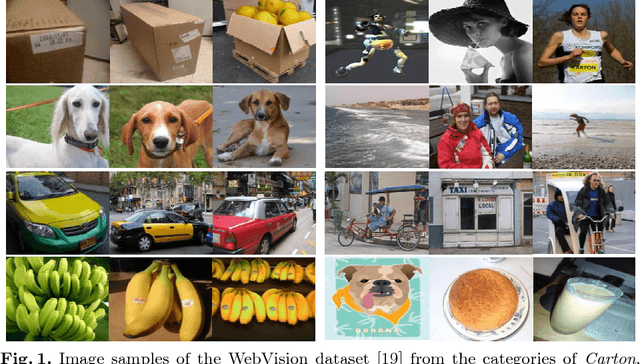

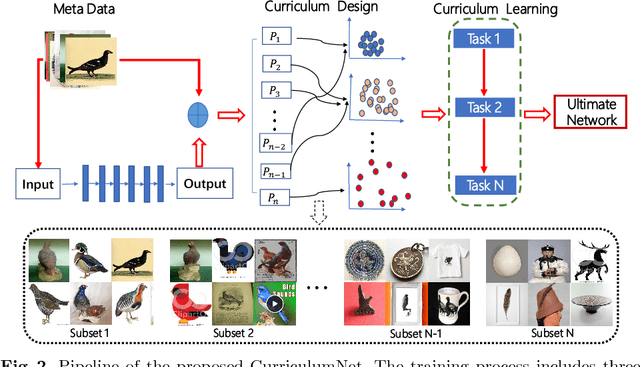

Abstract:We present a simple yet efficient approach capable of training deep neural networks on large-scale weakly-supervised web images, which are crawled raw from the Internet by using text queries, without any human annotation. We develop a principled learning strategy by leveraging curriculum learning, with the goal of handling a massive amount of noisy labels and data imbalance effectively. We design a new learning curriculum by measuring the complexity of data using its distribution density in a feature space, and rank the complexity in an unsupervised manner. This allows for an efficient implementation of curriculum learning on large-scale web images, resulting in a high-performance CNN model, where the negative impact of noisy labels is reduced substantially. Importantly, we show by experiments that those images with highly noisy labels can surprisingly improve the generalization capability of the model, by serving as a manner of regularization. Our approaches obtain state-of-the-art performance on four benchmarks: WebVision, ImageNet, Clothing-1M and Food-101. With an ensemble of multiple models, we achieved a top-5 error rate of 5.2% on the WebVision challenge for 1000-category classification. This result was the top performance by a wide margin, outperforming second place by a nearly 50% relative error rate. Code and models are available at: https://github.com/MalongTech/CurriculumNet .
 Add to Chrome
Add to Chrome Add to Firefox
Add to Firefox Add to Edge
Add to Edge